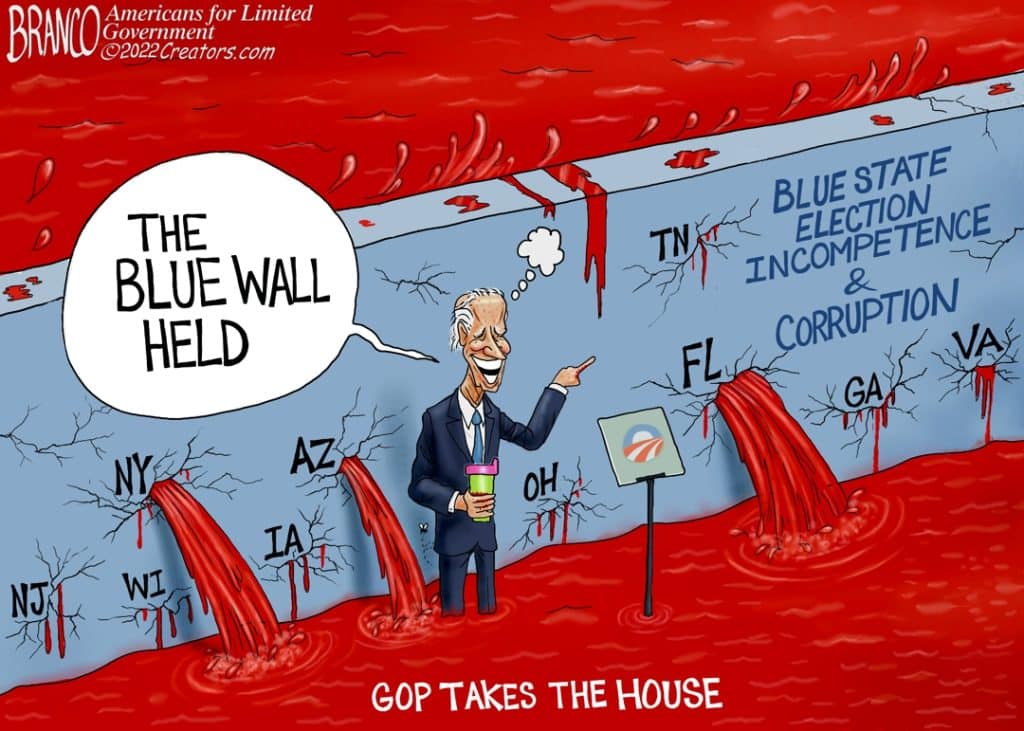
House Speaker Kevin McCarthy (R-Calif.) sees an opening for the newly minted U.S. House of Representatives majority led by Republicans to put pressure on President Joe Biden who is refusing to negotiate with Congress on increasing the $31.4 trillion debt ceiling, by focusing on Senate Democrats up for reelection in 2024.
With Senate seats in West Virginia, Ohio and Montana up for grabs in 2024—states former President Donald Trump, who is running again, easily carried in 2020 with 69 percent, 53 percent and 57 percent—that pressure could build in the form of concessions to House Republicans.
On Fox News, McCarthy called out the Democratic Senators by name: “[Joe] Manchin, Sherrod Brown, [Jon] Tester and others who say they’re moderates and that they want to work together here’s an example that 113 [House] Democrats voted for” pointing to a ban on U.S. oil exports to China from the Strategic Petroleum Reserve.
Then there’s former Democratic Sen. Kyrsten Sinema (Ariz.) who, sensing a primary challenge from the left for her own Senate seat up in 2024 after watering down Biden’s legislative agenda for two years and refusing to abolish the Senate filibuster, left her party to become an independent.
With Trump potentially being on the ballot in 2024, that could make those four seats harder for Democrats to hold on to, especially as elevated inflation, the highest interest rates in 20 years and the federal government’s stranglehold on U.S. carbon energy production are presented to voters in what promises to be another closely contested election.
In 2020, Biden barely beat Trump with slim majorities in Arizona (10,000 votes), Georgia (10,000 votes) and Wisconsin (23,000 votes)—enough to fit in a Trump rally.
Here, McCarthy is laying out a broader agenda, including on rolling back green energy subsidies and rescinding stepped up Internal Revenue Service (IRS) enforcement that was all included in the so-called Inflation Reduction Act, telling Fox News, “We’ve got a number of bills coming up in the future: securing our border, producing more energy, stopping this COVID emergency across America so we can all get back to work.”
So, Republicans will hold up or down votes on all of these issues via various appropriations bills and other legislation over the next two years. But some of it is also going to come to bear in the debt ceiling now up for consideration, as U.S. Treasury Secretary Janet Yellen has warned lawmakers that the federal government is resorting to so-called “extraordinary measures” to refinance the debt up to the $31.4 trillion limit. The Treasury can usually do that for several weeks or months as Congress works out a solution.
But President Biden so far is refusing to negotiate. On Jan. 17, Speaker McCarthy called out the White House, too: “I would like to sit down with all the leaders and especially the president and start having discussions…”
Last week, McCarthy kept pushing for spending caps to be included in any debt ceiling deal: “fiscal problems would be continuing to do business as usual.” So, something’s got to give. With a bicameral legislature, Biden cannot simply impose his will on Congress. He has to deal.
In 2011, former House Speaker John Boehner (R-Ohio), fueled by the Tea Party majority in Congress, successfully leveraged the debt ceiling and negotiated with Biden’s old boss, former President Barack Obama, to achieve a years long discretionary spending freeze known as sequestration that saved taxpayers hundreds of billions of dollars. That was when Democrats had 53 members caucusing with them. Now Democrats only have 50 or 51 if you still consider Sinema as a loose affiliate.
Meaning, McCarthy’s pressure on red state Senate Democrats could start to pay off. The debt ceiling will be the Blue Wall’s first test. Stay tuned.
Robert Romano is the Vice President of Public Policy at Americans for Limited Government.
To view online: https://dailytorch.com/2023/01/new-house-gop-majority-pressures-red-state-senate-democrats-on-debt-ceiling/
